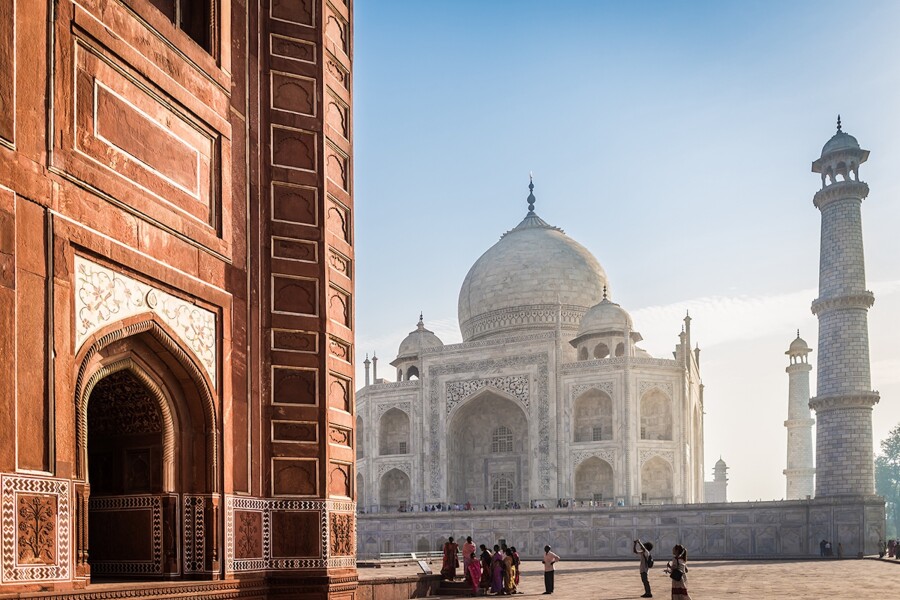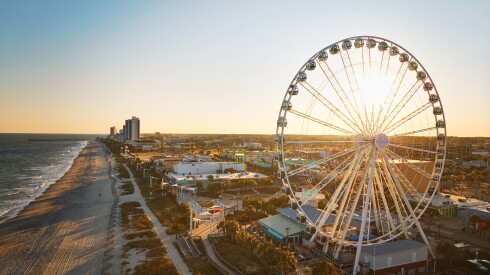Since 1972, the United Nations Educational, Scientific, and Cultural Organization (better known as UNESCO) World Heritage Committee has designated international sites worth preserving. Across 170 countries, these places span cultural, historical, and natural significance. For many travelers, they overlap with bucket-list spots (such as the Great Wall of China and the Taj Mahal), while other sites are relatively unknown and off the grid.
While it would take more than a lifetime to visit the 1,200 or so sites on the list, these 11 must-visit places spark wanderlust in a variety of ways, from the coast of France to the Australian outback.
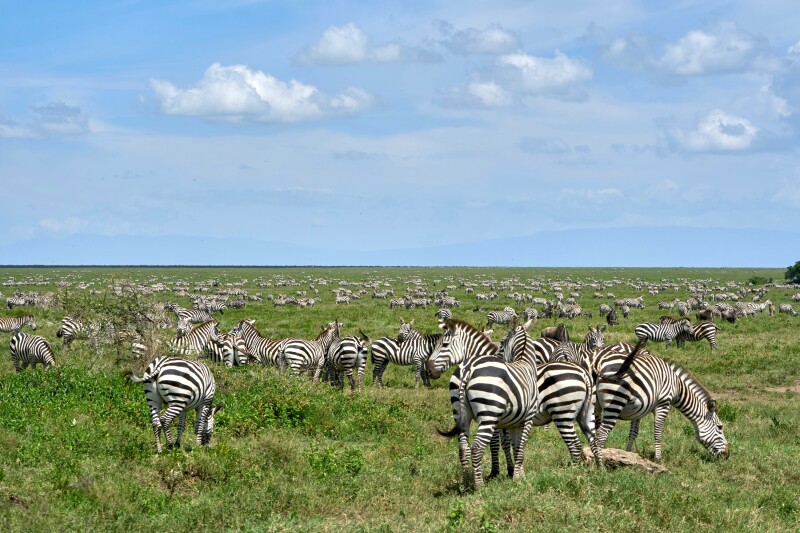
Wildlife and fossil remains are among the attractions at one of Tanzania’s most popular parks.
Photo by Dmitrii Zhodzishskii/Unsplash
1. Ngorongoro Conservation Area
Tanzania
UNESCO site Serengeti National Park draws hundreds of thousands of visitors every year, but right beside it is the lesser-known—also UNESCO-inscribed—Ngorongoro Conservation Area. This 2 million-acre part of northern Tanzania mixes nature and culture: Here you’ll find fossils of human ancestors, the world’s largest unbroken volcanic crater, and tons of safari wildlife, such as zebras and antelopes.
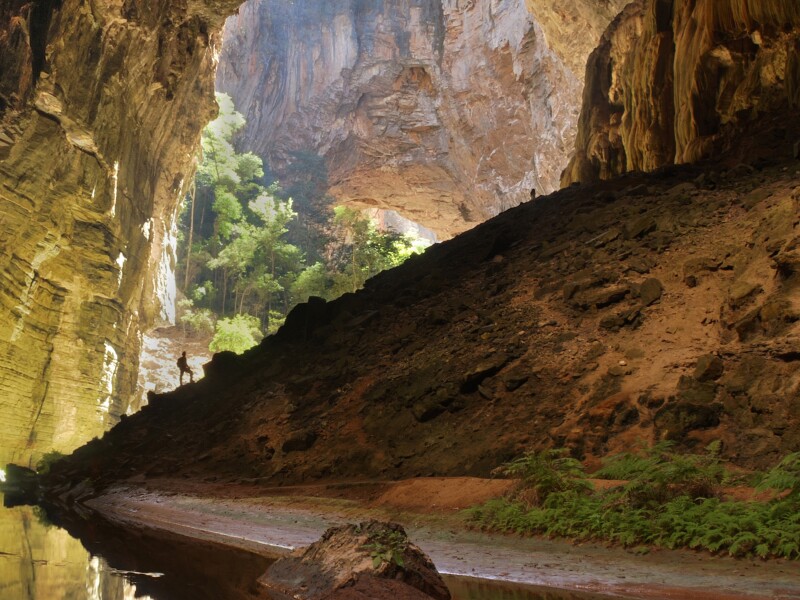
The Janelão cave in Brazil’s Peruaçu River Canyon is among the soaring rock formations that make this unique ecological site worth the journey.
Photo by Luciana Alt/Courtesy of UNESCO
2. Peruaçu River Canyon
Brazil
Huge limestone cliffs and caves characterize the Peruaçu River Canyon, making it a haven for outdoor adventure enthusiasts. This 2025 addition to the UNESCO heritage list in eastern Brazil is a critical home to biodiversity; the nearly 100,000-acre zone supports more than 2,000 plant and animal species. Here, evidence of prehistoric art can be found in rock formations such as the Gruta do Janelão cave, the largest in the canyon.
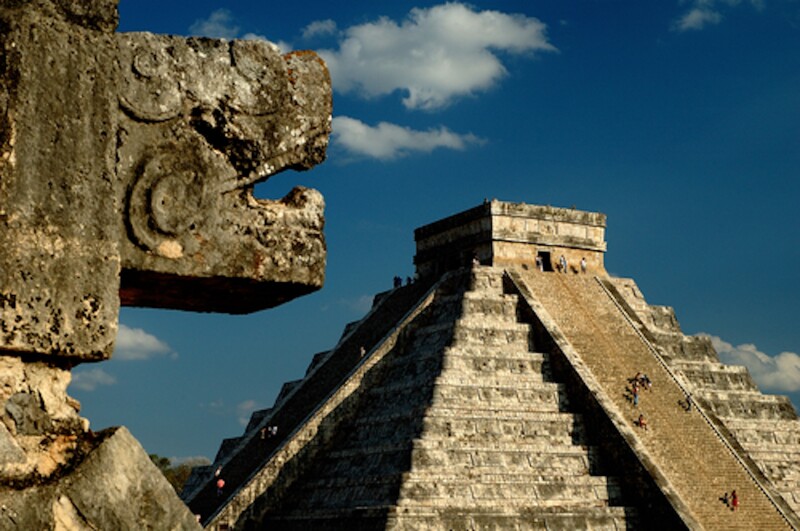
In the spring and fall, Chichén Itzá visitors can see the snake Kukulkan appear.
Photo by curtis/Shutterstock
3. Chichén Itzá
Mexico
Chichén Itzá hardly needs an introduction. It’s one of the Wonders of the World and home to the most famous ancient pyramid in Mexico (although there are plenty worth visiting). The ancient Mayan city dates back to 700 to 900 C.E. and showcases ancient ball courts, temples, and palaces throughout. The Castillo de Kukulcán pyramid was designed so that, on the spring and fall equinoxes, the play of sunlight and shadow would create the illusion of a snake descending to earth.

The twin tombs of the Jabal Al-Ahmar Necropolis at Hegra
amanderson2/Flickr
4. Hegra Archaeological Site
Saudi Arabia
While Jordan’s Petra garners about 1 million tourists every year, this UNESCO site is a less-crowded alternative with many similarities. Like Petra, Hegra was also a part of the Nabataean kingdom (which dated from about the fourth century B.C.E. until the first century C.E.). Hegra became the first World Heritage property in Saudi Arabia in 2008, and its 4,000 acres are full of incredible ruins, including 111 monumental tombs and ancient water wells.
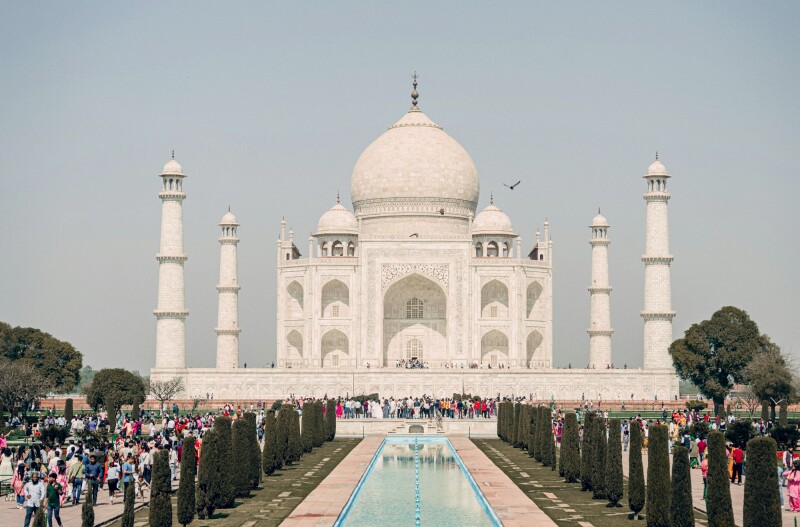
Mughal emperor Shah Jahan commissioned the Taj Mahal in Agra in 1631 to honor his late wife.
Photo by Arun Prakash/Unsplash
5. Taj Mahal
India
Located by India’s Yamuna River, the Taj Mahal is arguably the world’s grandest landmark related to love. It was commissioned by Mughal emperor Shah Jahan in 1631 to honor his late wife Mumtaz, and artisans from all over the empire, Central Asia, and Iran were summoned. The final result of their stonework, calligraphy, carvings, and gardening can be seen at this white marble mausoleum. Give yourself ample time to tour the 42-acre complex; besides the mausoleum, there is a mosque, a guest house, cloisters, courtyards, and vast gardens.
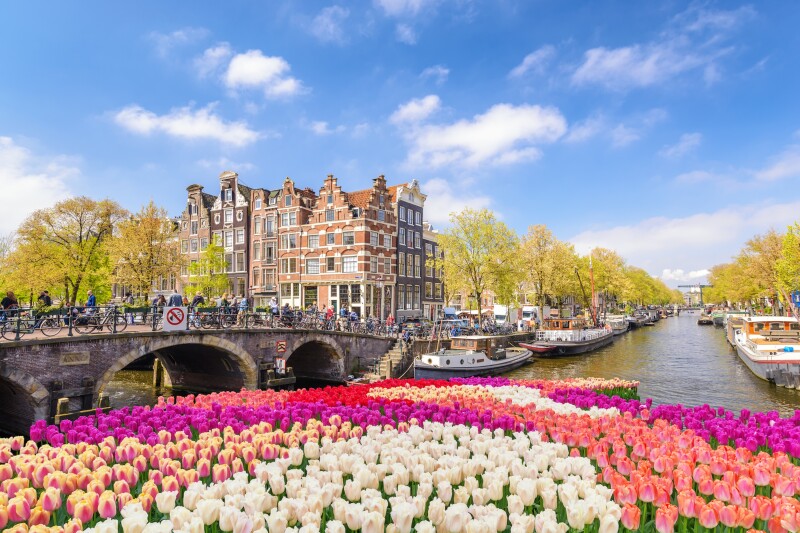
Amsterdam is famous for its canals that come alive with tulips during springtime.
Photo by Noppasin Wongchum/Shutterstock
6. Canal Ring
Netherlands
Beyond tulips and windmills, Amsterdam is commonly associated with its many waterways. Its UNESCO-recognized Canal Ring is made up of 165 fluid channels developed during the 17th-century Dutch Golden Age. In the ensuing years, the water network has supported maritime trade while evolving into the centerpiece of a city. Today, the Canal Ring is both a historic transportation system and a stunning backdrop for local festivals and celebrations. The canals are packed with partygoers during annual festivals such as King’s Day (formerly Queen’s Day) in April and Gay Pride and Grachtenfestival in August.
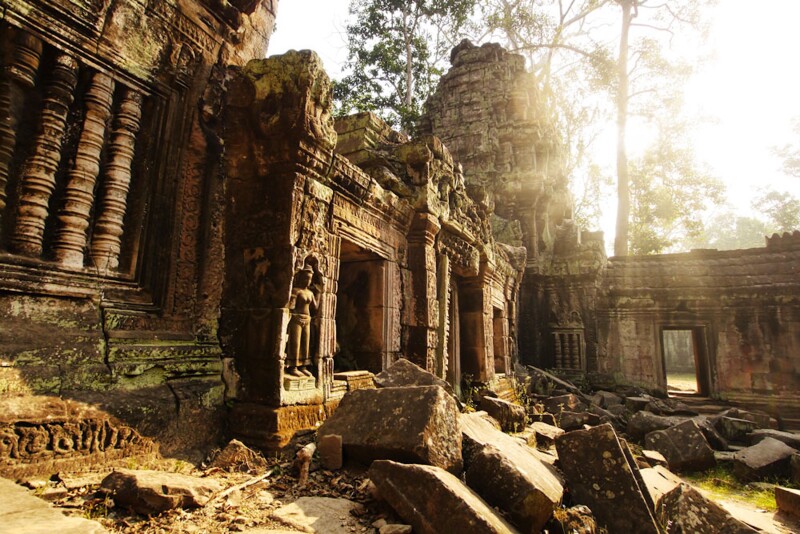
Come at the right time, and travelers can see Angkor’s temples free from the big crowds.
Photo by Lester V. Ledesma
7. Angkor
Cambodia
Angkor is an archaeological site in Cambodia, holding remains of the mighty Khmer Empire, which existed from the ninth to the 15th century. Angkor Wat is the centerpiece of the site, commissioned by King Suryavarman II in the 12th century and inspired by Hindu sacred design. (It’s estimated to have taken only about 30 years to build.) Watching the sunrise over the temple is one of the iconic experiences in Southeast Asia; while crowds are almost a guarantee, you can mitigate the hordes with an off-season visit during the rainy period (from June to October).
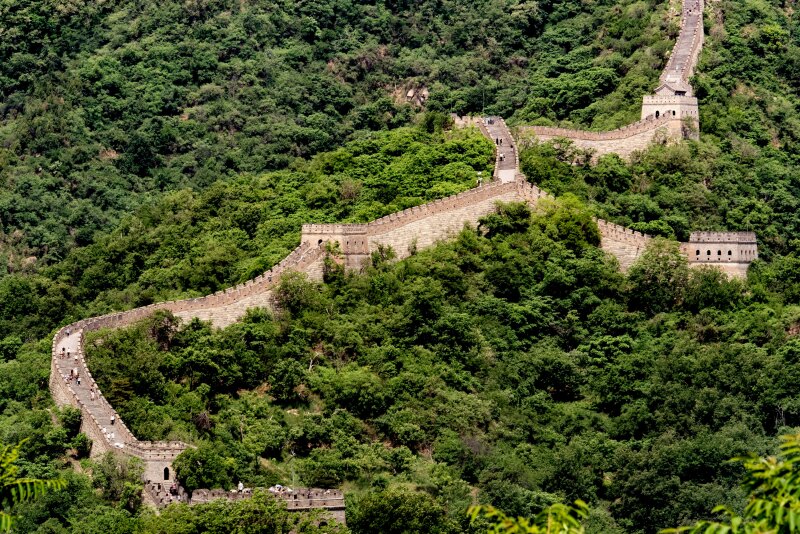
Despite popular belief, you cannot see the Great Wall of China from space.
Photo by Jamie Street/Unsplash
8. Great Wall of China
China
The fortified wall sections of the Great Wall of China run for about 13,000 miles. The wall was built as a defense against outside invaders, and some of the sections even date back to 220 B.C. Most travelers don’t opt to walk the whole thing and instead choose a section to traverse. Some choose more accessible portions like Mutianyu. Some sections are more remote and draw less crowds—the largely unrestored Jiankou is one such chunk, so book with an experienced group such as Beijing Hikers. And while the Great Wall is a great reason to visit the country, there are plenty of timely incentives to visit China right now.
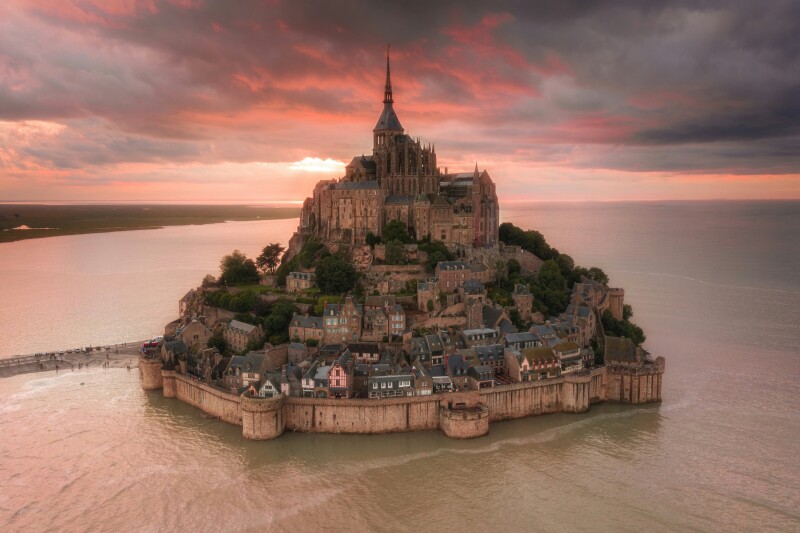
Mont-Saint-Michel is in Normandy, France.
Photo by Customerly/Unsplash
9. Mont-Saint-Michel
France
There’s nothing in the world quite like this abbey, located on an island and rising out of the bay like a heavenly apparition. From 966 onward, the dukes of Normandy, supported by French kings, oversaw the development of the abbey. Massive buildings were added throughout the Medieval period, and the abbey became a renowned center of learning, attracting some of the greatest minds in Europe. To access this UNESCO World Heritage site, you must park in an off-site lot and take a shuttle or walk over a footbridge.
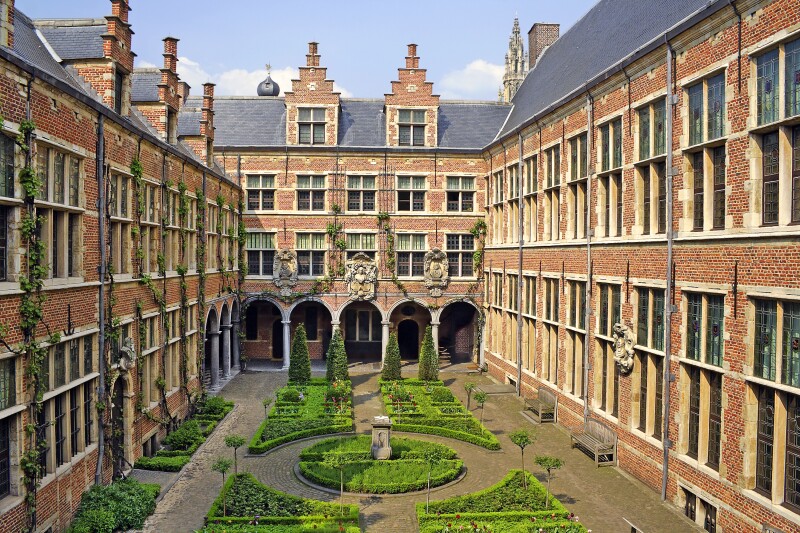
The Plantin-Moretus printing plant and publishing house dates back to the Renaissance and Baroque periods.
Photo by Pecold/Shutterstock
10. Plantin-Moretus Museum
Belgium
The Plantin-Moretus Museum in Antwerp, Belgium, is a culturally significant site, as it shows the life and work of one of 16th-century Europe’s most prolific printing and publishing houses. The old printing presses (some are the oldest still in working order) are fascinating by themselves, but the star of the museum’s collection is the Plantin family’s personal treasure trove of books and archives. If you are a book lover, don’t pass up this place: The library includes an early Gutenberg Bible, the first Dutch dictionary, one of the world’s first atlases, and many other treasures.

Uluru is one of the country’s most recognizable landmarks and a sacred site to many Indigenous Australian communities.
Photo by Antoine Fabre/Unsplash
11. Uluru-Kata Tjuta National Park
Australia
Uluru-Kata Tjuta National Park is one of the best examples of the red desert landscapes found in the Australian outback. The nearly 300,000-acre protected area, in the Northern Territory of Australia, is home to gigantic rock formations such as the Kata Tjuta domed formations. It’s also home to Uluru (or Ayer’s Rock, as many know it), a giant rock that holds immense cultural value for the Anangu Aboriginal people. The monolith holds extreme importance in the Tjukurpa, which is a belief system comprising Anangu law, culture, history, and worldview.

